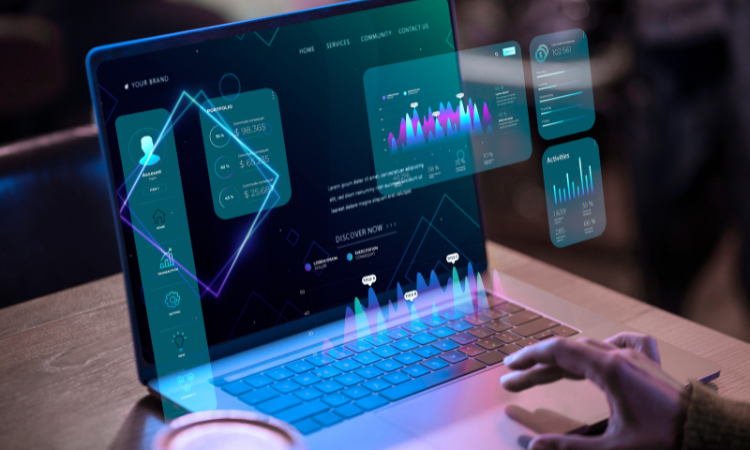Dashboards tell you what happened. Your customer conversations explain why. The most decisive signals about churn risk, product friction, and revenue moments are already in your calls, chats, and emails, yet they’re trapped in the mess of unstructured text and audio most teams never analyze. About 90% of enterprise data is unstructured, which means the richest insights you need are hiding in plain sight.
Meanwhile, the ground is shifting: survey-only systems are entering their “twilight,” as CX teams move from periodic scoring to continuous understanding of real interactions. That’s the promise of conversational analytics—using natural language processing and machine learning to turn raw conversational data into decision-grade customer insights. Instead of waiting for a monthly report, you can ask in plain language: “Why did customer sentiment dip this week?” and drill straight into the moments that matter.
Done right, conversational analytics links the human context of customer conversations to outcomes: improving customer satisfaction, coaching frontline agent performance, and accelerating data-driven decision making. It’s not another dashboard; it’s a faster way to see cause-and-effect—what customers said, what it meant, and what to do next.
This guide shows you what conversational analytics is (and isn’t), how it works under the hood, the KPIs that matter, where to start, and the pitfalls to avoid, so every conversation becomes a compounding advantage. Let's get started!
TL;DR
- Conversational analytics unlocks hidden insights by turning unstructured customer conversations—calls, chats, emails, and more—into actionable intelligence using NLP and machine learning.
- Unlike traditional analytics, which tells you what happened, conversational analytics explains why it happened by uncovering intent, sentiment, and emotion behind customer behavior.
- Conversational analytics captures conversations across channels, transcribes and structures them, analyzes sentiment and intent with AI, and converts insights into actions.
- Real-world applications span multiple teams: from optimizing customer support and boosting sales to refining marketing campaigns, and monitoring compliance risks among others.
- You can track key KPIs like customer sentiment, CSAT/NPS verbatims, agent performance, and trending topics to understand customer behavior and act proactively.
- Implementing conversational analytics starts with focus: define business questions, unify conversation data, choose the right tools, pilot effectively, and close the feedback loop.
- You need to be aware of challenges like transcription accuracy, NLP bias, overwhelming data volumes, and and address them with the right tools, integrations, and workflows.
- The future is AI-driven and predictive wherein you can expect generative AI, multimodal analytics, and real-time recommendations to move businesses from reactive reporting to proactive decision-making.
- Zonka Feedback offers conversational analytics tools to empower teams to capture omnichannel data, analyze sentiment and intent, coach agents, automate workflows, and unify insights into a single dashboard so every conversation drives measurable business impact. You can schedule a demo to explore how it helps to elevate customer experience.
Get a Better Understanding of Customer Feedback with Conversational Analytics
With Zonka Feedback, create surveys in seconds and use artificial intelligence to decode insights from the data collected.

What is Conversational Analytics?
Conversational analytics is the practice of transforming everyday customer conversations—whether through phone calls, live chat, emails, or social media—into meaningful business intelligence. Instead of letting transcripts sit as unstructured archives, conversational analytics processes this dialogue to uncover customer sentiment, preferences, and needs.
By applying natural language processing (NLP) and machine learning, it makes sense of tone, intent, and keywords hidden in real interactions. The result isn’t just data points but customer insights that can improve agent performance, refine the customer journey, and drive better customer satisfaction.
Here’s what makes conversational analytics valuable:
-
Goes Deeper than Numbers: A dashboard might show declining NPS, but analyzing customer conversations tells you that confusion about billing is the real issue.
-
Captures Real Behavior: Customers often say one thing in a survey but express something very different in live customer interactions. Conversational analytics bridges that gap.
-
Reveals Patterns at Scale: By interpreting conversational data across calls, chats, and emails, businesses can identify trends, spot recurring customer pain points, and improve agent performance.
-
Drives Data-driven Decisions: Instead of guessing why customer satisfaction scores shift, you get context that ties directly back to real customer needs.
Conversational Analytics vs. Traditional Analytics
Traditional analytics has always been about what happened: revenue up, churn down, calls answered. It’s helpful, but it’s also one-dimensional. Conversational analytics, by contrast, explains why those things happened. It goes inside the conversation to capture tone, intent, and emotion—signals that are invisible in spreadsheets.
For example:
-
Traditional analytics → shows a drop in customer satisfaction scores.
-
Conversational analytics → reveals that the drop came from repeated transfers during contact center calls, leaving customers frustrated.
That distinction matters. Traditional reporting warns you there’s a fire; conversational analytics tells you where it started and how to put it out.
How Conversational Analytics Works?
At first glance, customer conversations may look like a wall of text, audio recordings, or endless transcripts. But inside this unstructured mass is a map of your customer journey—what people feel, need, and struggle with. Conversational analytics doesn’t just process data; it connects the dots between customer sentiment, customer behavior, and business outcomes.
Here’s how the process unfolds:
1. Capturing Conversational Data Across Channels
Every touchpoint counts. From customer support calls in the contact center, to live chat, emails, or survey comments—these customer interactions are the raw material. The key is pulling them into one view so you’re not looking at conversations in isolation. Without this step, you miss the chance to spot patterns across multiple channels.
2. Transcription & Structuring with Natural Language Processing (NLP)
Once collected, conversations are converted into structured text using speech analytics and natural language processing (NLP). This is where human language gets transformed into something machines can interpret. It means customer frustration in a phone call, or joy expressed in a chat, becomes analyzable conversational data.
This stage is critical because it makes unstructured talk searchable and measurable—setting the foundation for uncovering actionable insights.
3. Analyzing Conversations with AI & Machine Learning
This is where the real value begins. Machine learning models and AI-powered analytics tools dig deeper into the structured data to:
-
Detect sentiment analysis (positive, negative, neutral) for real-time customer sentiment tracking.
-
Recognize intent and customer needs (“I want to cancel” vs. “I’m exploring options”).
-
Highlight recurring pain points that impact customer satisfaction or retention.
-
Compare historical data with past interactions to identify trends and shifts in customer behavior.
Instead of simply analyzing conversations, this stage transforms them into valuable insights—helping leaders move from gut feeling to data-driven decision making.
4. Turning Insights into Action
The final step is where conversational analytics proves its worth. Insights aren’t useful if they sit in a report. When embedded into business processes, they:
-
Improve agent performance with targeted coaching based on real customer feedback.
-
Help refine sales strategies by showing what messages resonate in customer interactions.
-
Boost customer satisfaction by addressing the customer concerns that emerge most often.
-
Enhance operational efficiency by reducing friction across the customer journey.
In other words, conversational analytics helps in closing the feedback loop: from messy talk to clear signal to smarter action.
Real-World Use Cases of Conversational Analytics
The true power of conversational analytics isn’t in the technology itself—it’s in how it transforms day-to-day customer interactions into strategic outcomes. By using natural language processing (NLP) and machine learning, businesses can analyze customer conversations across multiple channels—calls, chats, emails, and surveys—to surface valuable insights that improve the customer journey and boost customer satisfaction.
Here’s how organizations are putting it to work:
a. Customer Support & Contact Centers
Support conversations are often the first place where frustration surfaces, yet they’re also where opportunities to boost customer satisfaction live. By analyzing customer support calls and chat logs, businesses can quickly detect recurring pain points that aren’t visible in dashboards. You can use conversational analytics to:
-
Spot themes like “long hold times” or “repeated transfers” using speech analytics and natural language processing (NLP)
-
Measure agent performance by linking tone, resolution quality, and call outcomes
-
Use insights to streamline queues, coach agents, and improve service quality
b. Sales & Revenue Growth
In sales, small details in customer conversations often determine whether a deal closes or stalls. Machine learning can analyze call transcripts to uncover the real sticking points. Conversational analytics helps you to:
-
Identify common objections (e.g., “integration effort,” “timelines”) in demo phone calls
-
Track customer sentiment across stages of the funnel to spot risk early
-
Refine sales strategies with targeted enablement content that addresses recurring blockers
The outcome is shorter deal cycles, more predictable pipelines, and better data-driven decision making.
c. Marketing & Customer Experience
Marketers often rely on surveys or campaign metrics, but conversational data offers a more honest view of how customers feel. By bringing together verbatims from chat, email, and surveys, businesses get a real picture of customer behavior and preferences. By using conversational analytics, you can:
-
Pinpoint where messaging over-promises or creates confusion
-
Align campaigns with customer needs by tracking recurring topics in customer feedback
-
Feed insights back into content, positioning, and customer journey mapping
This makes campaigns more authentic and ensures the customer experience matches expectations.
d. Compliance & Risk Monitoring
In highly regulated industries, a missed disclosure in a contact center call can cost millions. AI-powered analytics tools catch what humans often miss. You can use conversational analytics analytics to:
-
Flag risky language or omitted disclosures in real time
-
Trace patterns back to specific products, geographies, or new hires
-
Use findings to update scripts and provide targeted training
The result is fewer compliance breaches, reduced risk, and greater operational efficiency.
e. Product & Journey Optimization
Finally, conversational analytics is invaluable for product and CX teams trying to understand adoption barriers. It helps you to:
-
Detect spikes in terms like “confusing” or “too slow” after a new release
-
Compare historical data with past interactions to see how sentiment shifts over time
-
Translate those insights into fixes, content updates, or personalized support nudges
This ensures the customer journey continually improves based on real-world signals, not assumptions.
Key Metrics & KPIs That Turn Conversational Analytics into Business Impact
We’ve seen where conversational analytics moves the needle. These KPIs show how much and where to act. Track them as trends, not one-off numbers; always segment by channel (calls, chat, email), journey stage, and customer cohort to avoid false signals.
Here are the KPIs that matter most:
1. Customer Sentiment Scores
Every interaction carries an emotional signal — frustration, delight, hesitation. By applying natural language processing (NLP) and machine learning, companies can track customer sentiment at scale, rather than relying on anecdotal impressions.
-
What to watch: Positive vs. negative shifts across phone calls, live chat, and emails
-
Why it matters: Sentiment acts as an early-warning system, showing you dips before they show up in retention numbers or customer satisfaction scores
-
For instance: A bank noticed negative sentiment spiking during billing conversations. Fixing unclear fee explanations reduced complaints and stabilized churn within a quarter
2. Customer Satisfaction (CSAT & NPS Verbatims)
A score tells you if customers are satisfied. But conversational analytics goes deeper, connecting those numbers to the actual words and pain points behind them.
-
What to watch: CSAT trends and recurring themes in NPS verbatims
-
Why it matters: Numbers alone can be misleading; when paired with conversational data, they uncover the real drivers of satisfaction or dissatisfaction
-
For instance: A retail brand linked low NPS to shipping update complaints, not product quality. Addressing communication gaps boosted satisfaction faster than product changes would have
3. Agent Performance
Traditional metrics like average handle time only reveal efficiency. Conversational analytics adds context by showing how customer conversations unfold, whether agents empathize, resolve issues, or escalate unnecessarily.
-
What to watch: Average handle time, resolution quality, empathy markers in speech analytics
-
Why it matters: Coaching based on real interactions improves both agent performance and customer experience, not just speed
-
For instance: A telco discovered agents who acknowledged frustration early reduced escalations by 17%, even if calls ran longer
4. Volume & Distribution of Topics
Thousands of daily customer interactions can feel like noise. Topic analysis turns that chaos into a map of what customers care about most, right now.
-
What to watch: Spikes in recurring issues, frequency of specific topics across multiple channels
-
Why it matters: Identifying trends early helps allocate resources, fix problems, and shape sales strategies or product priorities
-
For instance: A SaaS company saw a surge in “password reset” conversations after an update. Fixing the UX glitch quickly reduced support volume and boosted customer satisfaction
Each KPI on its own tells part of the story. But when you connect customer sentiment, satisfaction, agent performance, and topic trends, you move from fragmented metrics to a 360° view of the customer journey. Together, they give your CX teams not just numbers but valuable insights into customer behavior, pain points, and preferences, turning every conversation into a compass for data-driven decision making and continuous improvement.
How to Implement Conversational Analytics in Your Organization?
Understanding how conversational analytics works is only half the story. The real advantage comes when you embed it into everyday customer interactions and decision-making. Too often, teams treat it as another dashboard—when in reality, it should be a driver of customer satisfaction, agent performance, and operational efficiency.
Here’s a practical roadmap for how businesses implement conversational analytics successfully:
1. Start with a Clear Business Question
Don’t jump straight into conversational analytics tools. Begin by asking: What do we need to understand better? Maybe it’s why customer satisfaction scores dipped, why churn is rising in a segment, or how to improve agent performance in your contact center. These questions shape how you’ll analyze customer conversations and ensure you extract valuable insights, not noise.
For instance, a SaaS company started by asking why trial users weren’t converting. Analyzing conversations revealed repeated confusion around integrations, which shaped both onboarding flows and sales enablement content.
2. Bring Your Data Together
Customer conversations happen everywhere—customer support calls, live chat, email threads, even survey verbatims. Treating them as separate piles means you’ll miss patterns. A good conversational analytics platform unifies conversation data into one view, so you can analyze customer interactions across multiple channels and the entire customer journey.
Pro tip: Integrate with your customer relationship management (CRM) system to map insights directly to customer profiles, making it easier to act on trends in real time.
3. Choose the Right Technology (and Keep It Lean)
The market is flooded with conversational analytics software promising magic. What you really need is the right balance of speech analytics, natural language processing (NLP), and machine learning to process human language and spot patterns. The best tools don’t just process data, they help you gain insights that connect sentiment, intent, and context to measurable outcomes like customer retention or boosting customer satisfaction.
Watch out for overkill: More features don’t always mean more value. A lean, AI feedback analytics tool that slots neatly into your business processes often outperforms bloated platforms.
4. Pilot, Prove, and Scale
Rolling out to every team at once is a recipe for stalled adoption. Instead, pilot on one domain—say, customer phone calls in billing or onboarding. Show how sentiment analysis of those conversations leads to fewer escalations, or how surfacing recurring customer concerns saves hours in support. Once the ROI is visible, expand to more teams and communication channels.
5. Close the Loop with Action
The real impact of conversation analysis is in what you do with it. Insights should trigger decisions: coaching contact center agents, redesigning a confusing checkout flow, or reshaping sales strategies. Embedding insights into business processes ensures they don’t die in a report but instead drive customer engagement, loyalty, and long-term customer relationships.
Think of it this way: You’re not just interpreting conversational data; you’re creating a faster route from understanding customers’ true sentiments to acting on them.
Common Challenges in Conversational Analytics (and How to Solve Them)
Like any powerful capability, conversational analytics isn’t plug-and-play. Teams often stumble on the same roadblocks—whether it’s bias in natural language processing (NLP), the sheer scale of conversational data, or struggles with embedding insights into business processes. Here’s how to anticipate and solve the biggest challenges:
a. Accuracy in Transcription & NLP Bias
Even the best speech analytics systems can misinterpret accents, slang, or noisy customer phone calls. On top of that, machine learning models can inherit bias, skewing how they interpret customer sentiment.
How to solve it:
-
Use AI-powered transcription tuned for your industry vocabulary (e.g., financial terms, medical jargon).
-
Continuously validate outputs against real customer interactions to spot drift.
-
Pair machine-driven sentiment analysis with human review, especially for high-stakes use cases like compliance or customer satisfaction score tracking.
b. Overwhelming Volume of Conversational Data
Contact centers, live chats, and emails generate thousands of daily interactions. Without the right analytics tools, this volume becomes noise instead of valuable insights.
How to solve it:
-
Prioritize by business impact—focus first on customer concerns tied to churn, customer retention, or revenue moments.
-
Use topic clustering to identify trends and reduce clutter, rather than combing through every transcript.
-
Leverage historical data alongside fresh past interactions to see patterns and shifts in customer behavior over time.
c. Integrating Insights into Workflows
Too many organizations stop at “interesting reports.” If insights don’t connect to business processes, sales strategies, or frontline coaching, they lose momentum.
How to solve it:
-
Connect your conversational analytics software with existing systems like customer relationship management (CRM) or ticketing tools.
-
Build workflows where a spike in negative customer feedback automatically triggers alerts, retraining, or personalized support nudges.
-
Treat insights as inputs for customer journey mapping, not as siloed dashboards.
d. Driving Adoption Across Non-Technical Teams
Frontline managers, marketers, and even executives often hesitate to use conversation analytics tools if they feel too complex. This slows down adoption and stalls ROI.
How to solve it:
-
Choose a conversational analytics platform with simple dashboards that surface actionable insights, not just raw metrics.
-
Train contact center agents and non-technical teams with real use cases (e.g., “how this helps you resolve complaints faster” rather than “how the AI model works”).
-
Position it as a tool for improving customer service and boosting customer satisfaction, not as “more analytics work."
The Future of Conversational Analytics and AI
We’re only scratching the surface of what conversational analytics can do today. What started as a way to analyze customer conversations for sentiment and recurring pain points is rapidly evolving into something far more transformative. The next chapter blends artificial intelligence (AI), automation, and multimodal data to give businesses not just hindsight, but foresight.
a. From Analytics to Intelligence to Predictive Recommendations
First-generation systems gave us dashboards. Second-generation systems helped us gain insights into customer behavior and customer preferences. The next wave will go further—moving from insight to recommendation.
-
Instead of simply surfacing that customer sentiment dipped after a product launch, platforms will predict churn risk and recommend personalized support actions in real time.
-
Instead of flagging recurring customer concerns, systems will guide frontline teams on the most effective scripts or sales strategies to resolve them.
This shift turns conversation analysis into a decision-making engine that powers customer engagement, customer loyalty, and growth.
b. The Rise of Generative AI in Analytics Tools
AI-powered systems are moving beyond transcription and sentiment analysis. The real leap is in generative AI, which can interpret human language, draft summaries of customer interactions, and even recommend next steps—all instantly.
-
A conversational analytics tool could auto-generate weekly reports linking customer data to shifts in revenue.
-
Leaders could simply ask, “What are the top three drivers of dissatisfaction this month?” and get answers grounded in conversation data.
This makes conversational analytics software more accessible to non-technical users and ensures businesses implement conversational analytics as part of everyday decision-making, not just quarterly reviews.
c. Multimodal Analytics for Richer Customer Insights
Customers don’t just talk—they type, click, and increasingly share video. The future belongs to multimodal analytics, which interprets voice, text, and video together for a complete picture of customer experience.
-
A contact center may combine tone from customer phone calls with chat transcripts and even screen-recordings of frustrating checkout flows.
-
Interpreting conversational data across these multiple channels will give businesses a deeper understanding of how customers feel, what they struggle with, and how to improve.
The outcome? Faster root-cause detection, stronger customer relationships, and data-driven decision making that aligns closely with the real customer journey.
Conclusion
In this guide, we’ve unpacked conversational analytics—what it is, how it works, the KPIs that matter, real-world use cases, and even the challenges and future of the field. The big lesson?
Conversational analytics isn’t just about listening, it’s about transforming conversations into growth. It bridges the gap between numbers and context, turning customer interactions into actionable insights that improve satisfaction, sharpen agent performance, and uncover opportunities before they show up in revenue or churn. Companies that do this well don’t just measure, they adapt, respond, and build stronger relationships.
To make it happen, you need a powerful conversational analytics software that helps you unify conversations across multiple channels, automate speech analytics, and take data-driven actions that directly improve customer satisfaction and business outcomes.
Zonka Feedback is a top choice for businesses looking to unlock the full potential of conversational analytics. With its AI-powered capabilities, it empowers teams to:
-
Omnichannel Data Capture: Collect and analyze customer conversations across phone calls, live chat, email, and survey comments in one place.
-
AI-Driven Sentiment & Intent Detection: Leverage natural language processing (NLP) and machine learning to interpret tone, intent, and emerging pain points at scale.
-
Agent Performance Coaching: Use real customer interactions to improve service quality, shorten handle time, and deliver personalized support.
-
Automated Workflows: Trigger next steps from insights—whether it’s a follow-up, a sales nudge, or a compliance alert—so no signal is left unaddressed.
-
Unified Analytics & Dashboards: Track customer sentiment scores, CSAT, NPS verbatims, and more with real-time dashboards that turn conversation data into decisions.
-
Closing the Loop at Scale: Take action on insights with built-in collaboration tools that ensure customer concerns are resolved and promoters are engaged.
At the end of the day, conversational analytics is only as powerful as the action it drives. It’s not just about listening, it’s about adapting, responding, and evolving with your customers. You can schedule a demo to explore how with the right customer experience tool like Zonka Feedback, every conversation becomes an opportunity to boost customer satisfaction, strengthen relationships, and accelerate growth











